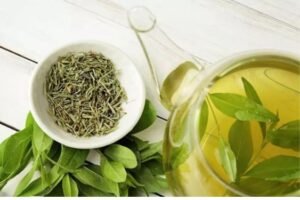📞 +91 9814611971 📞+91 981460097 📧 aarogyadhampkl@gmail.com
What are Piles And their Home remedies?
Piles And their Home remedies? ” Piles,” also known as hemorrhoids, are vascular structures in the anal conduit that play a part in controlling coprolite. They’re made up of muscle filaments, connective towel, and blood vessels and are a normal part of the deconstruction. When hemorrhoids enlarge, swell, or come lit , they can beget symptoms like pain, bleeding, or discomfort during bowel movements, which is when they become a clinical problem. The maturity of piles are benign, and veritably many people are apprehensive that they indeed live. In severe cases, symptoms could include bright red blood oohing from the droppings, a lump or pile that moves over and may need to be pushed back in, and itching around the anus.
Risk Factors of Piles And their Home remedies?

There are a number of reasons why piles, also known as hemorrhoids, develop, but one common cause is increased pressure on the modes in the anal and rectal regions. Typical reasons include:
Hemorrhoids are most frequently caused by straining when having bowel motions. Both diarrhea and constipation may be the cause of this. Hemorrhoids form as a result of straining, which raises the pressure in the rectum’s veins.
Chronic Diarrhea or Constipation: Hemorrhoids may develop as a result of ongoing problems with bowel movements. Constipation frequently causes straining, whereas persistent diarrhea can cause discomfort in the anal and rectal regions.
Obesity: Carrying too much weight around can increase the pressure on the veins in the pelvic and rectal areas, which raises the possibility of hemorrhoids.
Pregnancy and childbirth: Hormonal changes and increased pelvic vein pressure during pregnancy can lead to the development of hemorrhoids. Another possibility is straining during childbirth.
Extended Sitting: Hemorrhoids can develop as a result of prolonged sitting, particularly while using the restroom. Blood flow to the rectal area may be decreased by a sedentary lifestyle.
Low-Fiber Diet: Low-fiber diets have the potential to cause constipation, which raises the risk of straining when passing gas. Consuming enough fiber encourages regular bowel motions and keeps stools softer.
Age: As people age, the tissues supporting the veins in the rectum and anus may deteriorate, increasing the risk of hemorrhoids in older people.
Types of piles
Based on where they are found, hemorrhoids, also referred to as piles, can be divided into two categories: internal and external.
Internal Hemorrhoids Piles And their Home remedies?
First-degree: These hemorrhoids don’t extend past the anal opening; they bleed but don’t prolapse.
Second-degree: When having a bowel movement, prolapse and retract. They might be uncomfortable and bleed.
Third-degree: Prolapse that requires manual pushing back during a bowel movement. They might be extremely uncomfortable.
Fourth-degree: The prolapsed area is unrepairable. They could cause excruciating pain if they have blood clots in them or if they pull a large portion of the rectum’s lining through the anus.
External Hemorrhoids Piles And their Home remedies?
These hemorrhoids develop outside of the anal opening, beneath the skin.
You may see or feel an external hemorrhoid if it prolapses to the outside (usually during straining during a bowel movement).
Symptoms of Piles and Treatment
Hemorrhoids, or piles, can present with a variety of symptoms based on their kind and severity. The following are typical signs of hemorrhoids:
Bleeding: Bright red blood on toilet paper, in the toilet bowl, or on the surface of the stool following a bowel movement is one of the most typical symptoms. It is common for internal hemorrhoids to be linked to this bleeding.
Itching or Irritation: Anal discomfort may result from itching or irritation in the region. Hemorrhoids that are external or internal may exhibit this symptom.
Pain or Discomfort: Pain is common, particularly during and following bowel motions. Because they are inside the rectum, internal hemorrhoids may be less painful than external hemorrhoids, which can be more painful because they are under the skin near the anal opening.
Swelling or Lump Near the Anus: An palpable or visible lump surrounding the anal opening may be the result of external hemorrhoids. This lump could hurt or be sensitive.
Prolapse: During bowel movements, there may be a protrusion or prolapse associated with internal hemorrhoids. This indicates that the hemorrhoids extend past the anal opening and may require manual prodding back inside.
Mucus Discharge: A mucus discharge from the anus may occur in certain hemorrhoid patients.
Unable to Fully Empty the Bowels: Large or prolapsed hemorrhoids can obstruct regular bowel movements, leaving one with the impression that their evacuation is incomplete.
Ayurvedic treatment of Piles
Numerous herbal treatments are available in Ayurvedic medicine to treat piles, commonly referred to as hemorrhoids. Before beginning any treatment, you should speak with a licensed Ayurvedic practitioner to make sure it is suitable for your particular condition. Herbal remedies, conventional therapeutic techniques, and dietary and lifestyle modifications are frequently the mainstays of Ayurvedic treatments for piles.
Nutritional Adjustments: High-Fiber Diet: Keeping a high-fiber diet can help avoid and treat constipation, which is a common cause of piles. Incorporate whole grains, legumes, fruits, and vegetables into your daily meals.
Hydration: To keep soft stools and facilitate bowel movements, it’s important to drink plenty of water.
Herbal Treatments:

Triphala: Traditionally used in Ayurvedic medicine, triphala is a herbal preparation made with three fruits that is said to have laxative qualities and help control bowel movements.
Aloe Vera: To relieve afflicted areas and lessen inflammation, apply aloe vera gel or juice topically.
Ayurvedic Herbal Formulations: Ayurvedic practitioners may prescribe specific herbal formulations, such as Pilex, Arshoghni Vati, or different decoctions.
Lifestyle Practices:
Frequent Exercise: Physical activity on a regular basis can aid in better digestion and lower the chance of constipation.
Yoga and Pranayama: A variety of yoga poses and breathing techniques can enhance general wellbeing and aid in stress reduction, both of which are advantageous for digestive health.
Ayurvedic Methods:
Kshara Sutra Therapy: In this method, hemorrhoids are cut and removed using a specially treated thread called kshara sutra. It’s regarded as an Ayurvedic surgical method.
Nasya therapy: Nasya is the inhalation of medicated oils; it is suggested for ailments pertaining to the anal area.
Home remedies for Piles

Numerous natural treatments can aid in reducing piles (hemorrhoids) symptoms and accelerating healing. It’s crucial to remember that while these treatments might be helpful, they shouldn’t take the place of expert medical advice. It is best to speak with a healthcare provider if your symptoms are severe or if the condition doesn’t go away.
Dietary Adjustments:
Boost Fiber Intake: Eating a diet high in fiber helps soften and facilitate the passage of stools. Legumes, whole grains, fruits, and vegetables are all excellent providers of fiber.
Keep Yourself Hydrated: Eating a lot of water promotes overall digestive health and helps ward off constipation.
Warm Bath: Several times a day, soaking the anal region in warm water for 15 to 20 minutes can help relieve pain and reduce swelling.
Topical Interventions:
Aloe Vera Gel: This soothing substance can help lessen inflammation by applying aloe vera gel to the affected area.Coconut Oil: Rubbing the anal area with coconut oil may help to relieve irritation and itching.
Conclusion
In summary, hemorrhoids, also referred to as piles, are a common and uncomfortable condition that are characterized by swollen and inflamed veins in the rectum and anus. They can cause a variety of symptoms, such as bleeding, itching, pain, and discomfort during bowel movements, even though they are typically benign. In order to manage and prevent this condition, it is crucial to understand its causes and risk factors, which include straining during bowel movements, chronic constipation, obesity, and pregnancy. Some people also think about using Ayurveda and complementary therapies, like herbal remedies and customs, to treat piles. Nonetheless, in order to guarantee the security and effectiveness of any selected treatment strategy, it is imperative to confer with medical experts, including Ayurveda practitioners. Contact Now For More Information
